Amazon has developed into one of the biggest and most successful online marketplaces in the world, making it a desirable platform for business owners and entrepreneurs.
Amazon is a lucrative e-commerce platform for sellers, with 60% of sales coming from third-party sellers. The average seller generates $200,000 in revenue per year with 63% becoming profitable within the first year. Over 50% of Amazon sellers sell their products globally, and the average seller has over 2,000 products listed on the platform. 36% of sellers earn $5,000 per month or more.
In this manual, we’ll walk you through every step of how to become a prosperous Amazon seller, from identifying your niche to improving your product listings and keeping up with the times.
How To Sell On Amazon for Beginners
Finding Your Niche in Amazon’s Marketplace
Finding the right niche is the foundation of a successful Amazon business. To do this, start by conducting thorough market research. Amazon provides valuable tools like the Best Sellers list, which ranks products based on their popularity within categories. Explore these lists to identify niches with high demand.
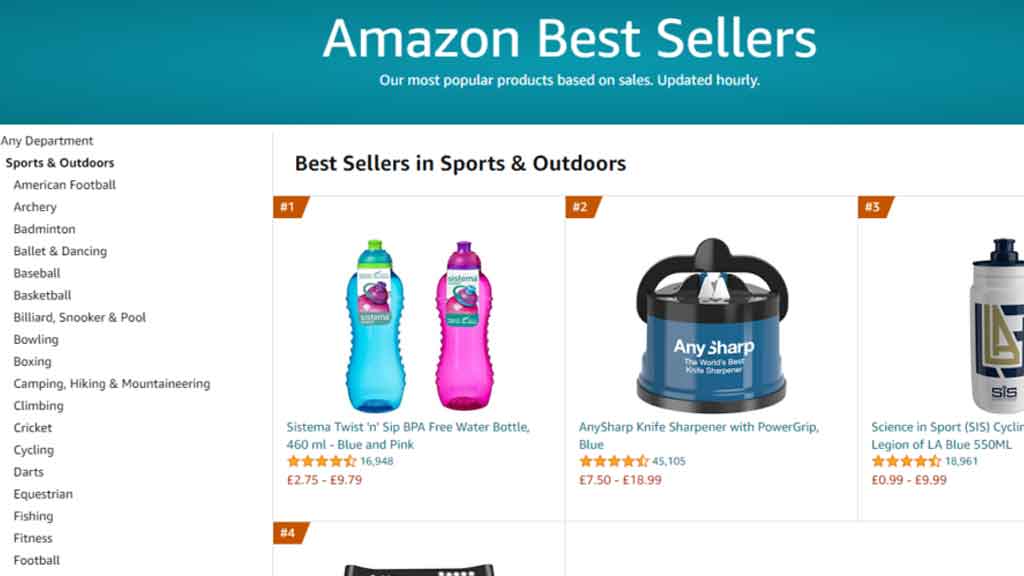
Additionally, leverage keyword research tools such as Merchant Words, Helium 10, or Amazon’s own Keyword Planner. These tools help you uncover keywords that potential customers are using to search for products within your chosen niche.
You can use Google Trends to identify what times of the year some keywords are searched more. If the search volume trend data is steady, it means the products sell around the year. But if there’s a periodic spike in the search volume, it shows seasonality.
Once you’ve identified potential niches, consider your own interests and expertise. It’s often easier to succeed in a niche you’re passionate about or have knowledge of. Look for a balance between high demand and your personal interest.
Setting Up Your Amazon Seller Account
Creating an Amazon seller account is a straightforward process. You have two options: Individual and Professional. A Professional account is made for high-volume sellers, whereas an Individual account is best for people who intend to sell fewer than 40 goods each month.
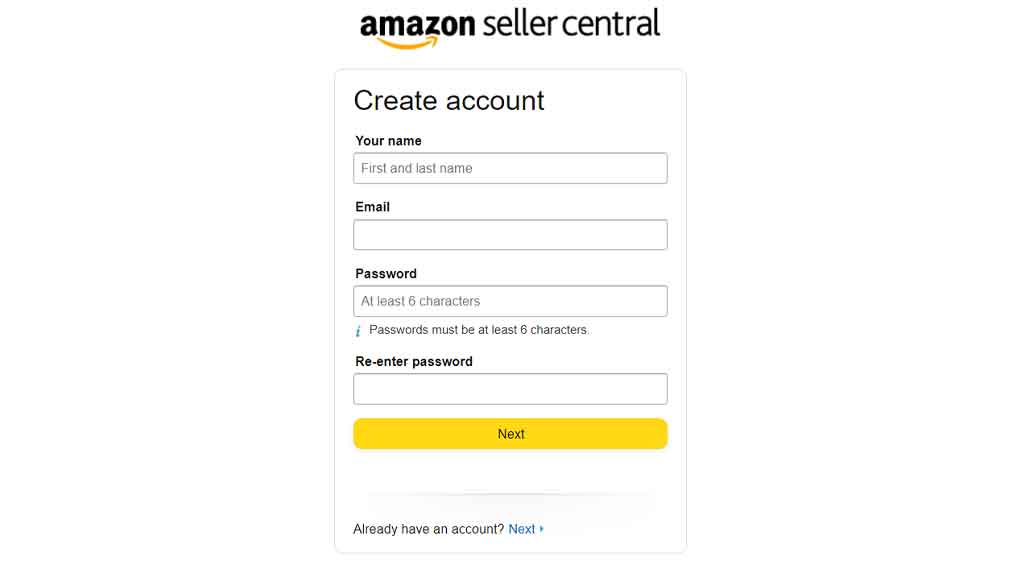
You must enter crucial details during setup, such as your company name, contact information, and bank account number for payments. Additionally, you’ll have to go through a verification procedure, which can require you to provide tax information.
Sourcing and Listing Your Products
Sourcing products is a critical step in your Amazon journey. You can choose from various sourcing methods, including:
- Wholesale: Purchasing products in bulk from authorized distributors.
- Private Labeling: Customizing existing products with your brand.
- Retail Arbitrage: Buying discounted products from retail stores and reselling them on Amazon.
- Dropshipping: Partnering with suppliers who ship products directly to customers.
What this looks like on Amazon:

When listing your products on Amazon, focus on creating compelling and accurate listings. Include high-quality images, detailed descriptions, and pricing that is competitive within your niche. Be sure to research your competitors and offer unique value to attract customers.
Optimizing Your Product Listings
To optimize your product listings, you need to understand Amazon’s A9 algorithm. This algorithm determines the visibility of your products on the platform. Key factors that influence your product’s ranking include:
- Relevancy: Ensure your product title, descriptions, and backend keywords contain relevant keywords.
- Conversion Rate: Products that convert well are given higher visibility.
- Customer Satisfaction: High ratings, positive reviews, and excellent customer service contribute to a better ranking.
Regularly monitor your product listings and make data-driven improvements. Use Amazon analytics tools and A/B testing to assess the impact of changes you make.
Fulfillment Options: FBA vs. FBM
Fulfillment by Amazon (FBA) and Fulfilment by Merchant (FBM) are the two main fulfillment options offered by Amazon.
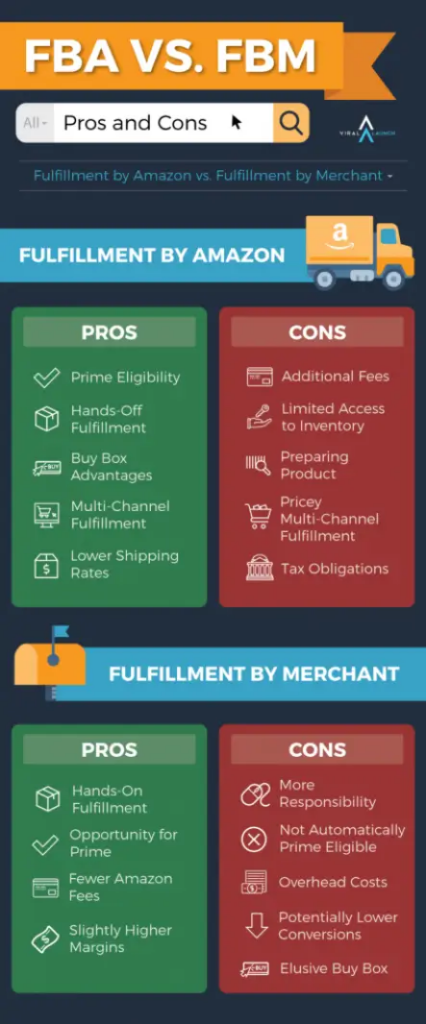
Amazon Fulfilment (FBA): With FBA, Amazon takes care of your products’ storage, packing, and delivery. Additionally, client service is offered.
This can be a convenient option, especially for those who want to scale quickly and take advantage of Amazon Prime eligibility.
Fulfillment by Merchant (FBM): FBM means you’re responsible for storing, packing, and shipping orders. This option provides more control but requires careful inventory management and efficient shipping processes.
Choose the fulfillment method that aligns with your business goals and resources. Many sellers start with FBM and transition to FBA as their business grows.
Tools and Software to Succeed on Amazon
Keyword Research and SEO Tools
Effective keyword research is crucial for visibility on Amazon. Tools like Merchant Words, Helium 10, and Jungle Scout can help you identify high-performing keywords. They provide data on search volume, competition, and related keywords, allowing you to optimize your product listings effectively.
Inventory Management Software
Inventory management can make or break your Amazon business. Utilize software like Seller Active, ecomdash, or Skubana to track stock levels, automate restocking, and avoid costly stockouts or overstocking issues.
Pricing and Repricing Tools
Dynamic pricing can help you stay competitive. Tools like Reprice Express and Informed. co monitor competitors’ prices and adjust your prices accordingly. This real-time repricing ensures your products are competitively priced.
Analytics and Reporting Solutions
To make informed decisions, use analytics tools such as Sellick, AMZScout, or Data Hawk. These tools provide valuable insights into sales performance, customer behavior, and keyword ranking. Analyze this data to optimize your strategies.
Review and Feedback Management
Maintaining a positive seller rating is vital. Tools like Feedback Whiz and Feedback Genius can help automate feedback requests and monitor reviews. Address negative feedback promptly and professionally to uphold your reputation.
How to List Products on Amazon for Better Sales
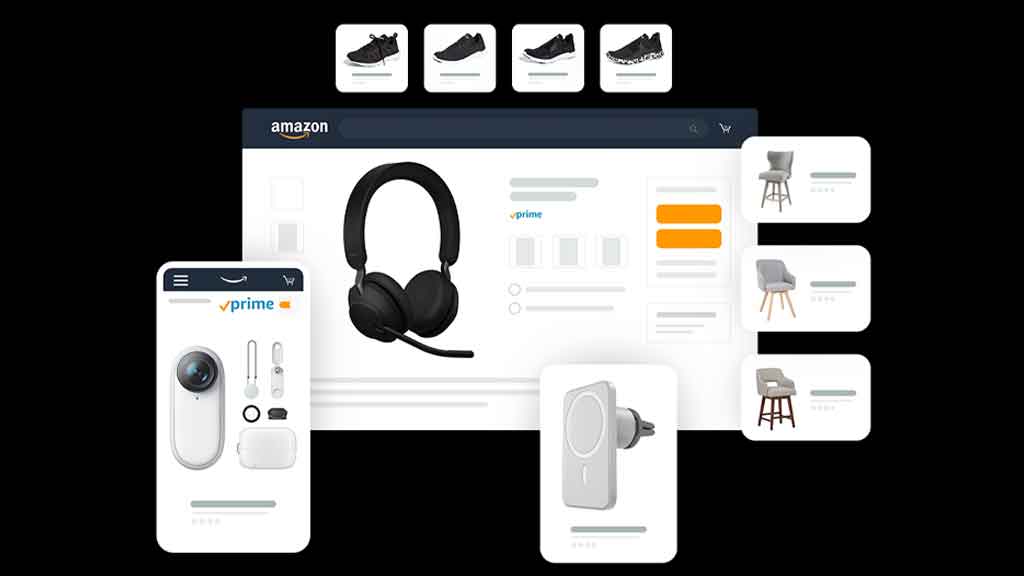
Mastering Amazon SEO and Conversion
Amazon’s A9 algorithm plays a pivotal role in product visibility. To optimize for A9, focus on:
- Keyword Placement: Incorporate relevant keywords in your product title, description, and backend keywords.
- Conversion Rate: Improve your product’s click-through and conversion rates through compelling listings.
- Customer Satisfaction: Encourage positive reviews and promptly address customer issues.
Crafting Irresistible Product Titles
Create concise yet descriptive product titles. Include relevant keywords, key features, and benefits. Ensure titles are easy to read and understand.
Compelling Product Descriptions and Bullet Points
The product description should provide in-depth information. Use bullet points to highlight key features, specifications, and benefits. Address potential customer questions to reduce uncertainty.
High-Quality Product Images and Videos
Quality visuals are essential. Include multiple high-resolution images showcasing different angles and use cases. Consider adding videos to demonstrate your product in action, helping customers make informed decisions.
Utilizing Amazon A9 Algorithm to Your Advantage
Regularly monitor your product’s performance and experiment with different elements. This may include testing various images, titles, and product descriptions to improve your ranking and click-through rate.
Customer Reviews and Social Proof
Encourage satisfied customers to leave reviews. Respond to reviews, both positive and negative, to show your commitment to customer satisfaction. High ratings and positive feedback build trust with potential buyers.
Latest Trends in Amazon FBA
Fulfillment by Amazon (FBA) Explained
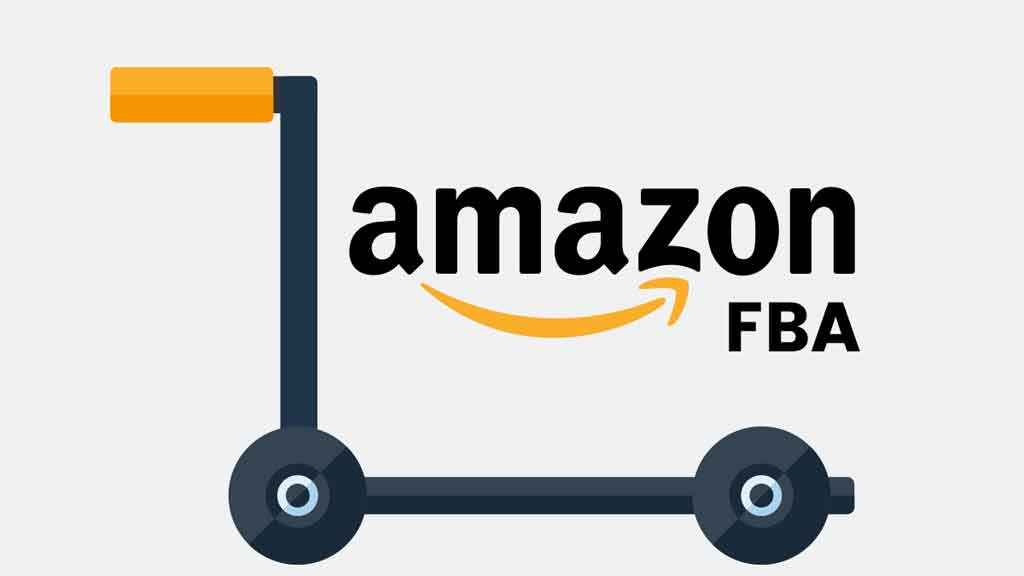
Fulfillment by Amazon (FBA) is a service that has revolutionized e-commerce. It allows sellers to leverage Amazon’s extensive fulfillment network, enhancing customer experience and seller convenience. Here’s a more comprehensive explanation:
FBA entails shipping your products to Amazon’s fulfillment centers, where they are stored, packed, and shipped to customers when orders are placed. This offers several compelling advantages:
- Prime Eligibility: Perhaps the most enticing benefit is Prime eligibility. FBA products are often Prime-eligible, meaning they qualify for Amazon’s fast, two-day shipping service. This significantly increases your product’s visibility and the likelihood of conversion. Prime members are known for their loyalty and are more likely to buy Prime-eligible items.
- Scalability: FBA simplifies the logistics of scaling your business. Amazon takes care of order fulfillment, freeing you from the hassles of packing and shipping. This means you can concentrate on finding profitable products, marketing, and growing your brand.
- Customer Trust: Many customers trust products fulfilled by Amazon. They know that if any issues arise, Amazon’s customer service will handle them promptly. This trust can lead to higher sales and fewer customer service-related headaches for you.
- Global Reach: FBA provides access to international markets. With Amazon’s extensive fulfillment network around the world, you can easily expand your business to customers in different countries.
Emerging FBA Trends and Technologies
To stay competitive in the dynamic world of e-commerce, sellers should keep an eye on emerging trends and technologies within FBA:
- Automation: Automation is transforming FBA operations. Automated picking and packing systems, chatbots for customer service, and AI-driven inventory management tools are becoming more prevalent. These technologies reduce human error, increase efficiency, and lower operational costs.
- AI-Driven Analytics: Analytics powered by machine learning and artificial intelligence (AI) assist merchants in understanding consumer behavior, sales patterns, and market trends. They make it possible to make data-driven decisions that improve pricing, target particular client segments, and better manage inventories.
- Sustainability: Sustainability is a growing concern in e-commerce. Amazon and FBA merchants are embracing environmentally friendly practices like using recyclable packaging and lowering carbon footprints more frequently. Brands that embrace sustainability not only attract environmentally conscious customers but also contribute to a more sustainable future.
Expanding Your Product Line with FBA
Once you have a well-established FBA product or product line, consider expanding strategically:
- Complementary Products: Explore complementary products within your niche. For example, if you sell fitness equipment, consider adding nutritional supplements or workout apparel. This allows you to cross-promote products and increase customer lifetime value.
- New Niches: Don’t limit yourself to a single niche. Research and enter new niches that align with your business expertise and interests. Expanding into different niches diversifies your revenue streams and reduces risk.
- Private Labeling: Consider private labeling if you haven’t already. This involves branding existing products as your own. It allows you to offer unique products and build brand loyalty.
Inventory Management and Cost Efficiency
Efficient inventory management is crucial to maximizing profitability and preventing costly mistakes. Here are some best practices:
- Just-in-Time Inventory: Adopt a just-in-time (JIT) inventory approach. This means ordering products as you need them rather than holding excess inventory. JIT reduces storage costs and minimizes the risk of overstocking.
- Demand Forecasting: Utilize demand forecasting tools and historical sales data to predict future demand accurately. This helps you avoid stockouts and overstocking.
- Supplier Relationships: Build strong relationships with your suppliers. Communication and collaboration can lead to better terms, quicker deliveries, and cost savings.
- Inventory Audits: Conduct regular inventory audits to ensure accuracy. Identify slow-moving items and consider discounting or liquidating them to free up capital.
Global Expansion and FBA
Expanding your business to international markets is an exciting opportunity, and FBA can simplify the process:
- Market Research: Start by conducting thorough market research to identify promising international markets. Consider factors like population size, purchasing power, and competition.
- Logistics: FBA’s global fulfillment network streamlines international shipping and customs procedures. You can ship your products to Amazon’s international warehouses, and they take care of the rest, including local delivery.
- Localization: Tailor your product listings to local markets. Translate your product descriptions, titles, and keywords into the local language. Consider cultural nuances and preferences.
- Currency and Pricing: Be mindful of currency exchange rates and adjust your pricing accordingly. Offer competitive pricing in each target market to attract local customers.
Expanding globally with FBA can be a lucrative endeavor, but it’s essential to approach it strategically and be prepared for the unique challenges of international e-commerce.
Best Strategies for Amazon Affiliate Marketing
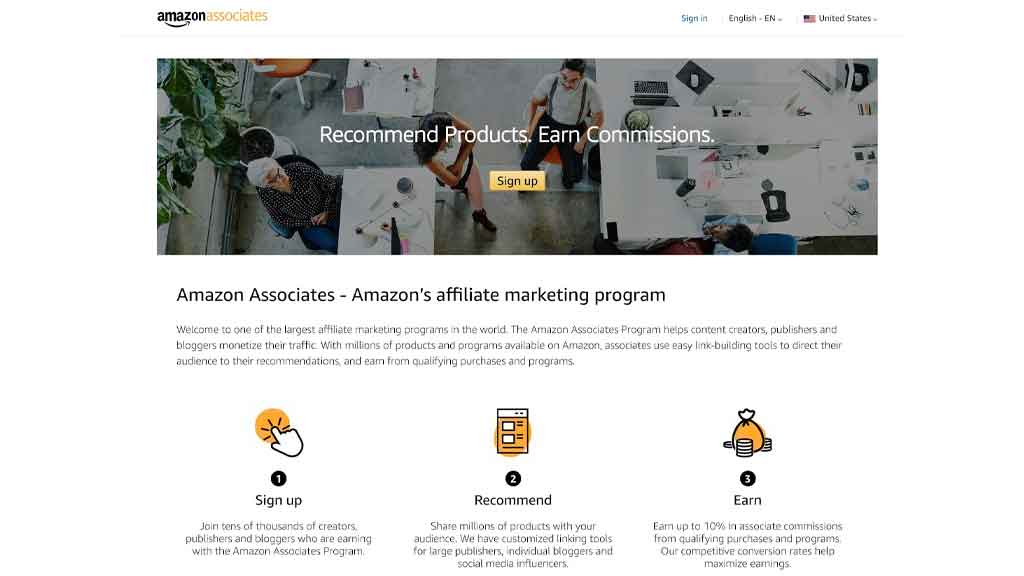
Understanding the Amazon Affiliate Program
You can make money by marketing goods on Amazon using the affiliate program, often known as Amazon Associates. Create an Amazon Associates account and select some niche-appropriate products to get started.
Identifying High-Converting Amazon Products
Look for products with a track record of high sales, positive reviews, and relevance to your audience. Focus on products that solve problems or fulfill needs within your niche.
Creating Engaging Affiliate Content
Produce content that genuinely adds value to your audience. This can include product reviews, tutorials, and comparisons. Be transparent about your affiliate relationships to build trust with your audience.
Driving Traffic to Your Amazon Affiliate Links
Promote your affiliate content through various channels, including your blog, social media, email marketing, and paid advertising. Experiment with different promotional strategies to find what works best for your audience.
Analyzing and Optimizing Your Affiliate Campaigns
Regularly analyze your affiliate marketing performance. Track metrics like click-through rates, conversion rates, and revenue generated. Use this data to refine your content and promotional strategies for better results.
Best Way to Handle Customer Service on Amazon

Understanding Amazon’s Customer Service Policies
You must have a complete understanding of Amazon’s customer service guidelines to deliver first-rate customer support on the site. These guidelines are essential to your success as a seller since they safeguard purchasers and put customer pleasure first:
- On-Time Shipping: Amazon requires you to ship orders promptly and meet specified delivery windows to ensure customers receive their products on time.
- Order Defect Rate (ODR): This metric tracks the percentage of orders with defects, including negative feedback, A-to-Z Guarantee claims, and chargebacks. Keeping your ODR low is essential for maintaining a good seller reputation.
- Returns and Refunds: Amazon’s return policy is buyer-friendly. Be prepared to handle returns professionally and efficiently, offering refunds when necessary.
- Customer Feedback: Encourage customers to leave feedback and reviews, as these can significantly influence your sales. However, be cautious about requesting feedback too frequently, as it may annoy buyers.
Responding to Customer Inquiries and Feedback
Timely and professional communication is key to handling customer inquiries and feedback effectively:
- Prompt Responses: Respond to customer inquiries and messages as quickly as possible. Amazon expects a response within 24 hours, even on weekends and holidays.
- Resolution: Address customer concerns and issues proactively. Offer solutions and options that are within Amazon’s policies to resolve disputes amicably.
- Language and Tone: Maintain a polite and professional tone in all your communications. Avoid confrontations and never engage in arguments with customers, especially in public responses.
Handling Returns and Refunds with Excellence

Amazon’s customer-centric approach extends to its return and refund policies:
- Clearly Defined Return Policy: Create a clear and customer-friendly return policy and make it easily accessible in your product listings. Amazon’s A-to-Z Guarantee allows customers to request refunds if they encounter issues.
- Efficient Refund Process: Process refunds promptly upon receiving returned items in good condition. Amazon expects quick resolution of refund requests to maintain customer satisfaction.
- Inspect Returns: When receiving returned items, carefully inspect them to ensure they are in resellable condition. If necessary, Amazon provides guidelines for filing a claim for damaged returns.
Dealing with Negative Reviews and Disputes
Negative reviews are an inevitable part of selling on Amazon, but how you handle them can make a significant difference:
- Professionalism: When you receive a negative review, maintain professionalism in your response. Avoid defensive or confrontational language. Instead, express understanding and a genuine desire to address the issue.
- Private Resolution: Whenever possible, attempt to resolve issues privately through direct communication with the customer. Many customers are willing to update or remove negative reviews if their concerns are resolved satisfactorily.
- Reporting Inappropriate Reviews: If a review violates Amazon’s guidelines (e.g., contains profanity or false information), you can report it to Amazon for removal. However, be cautious when using this option and only do so for legitimate violations.
Building a Brand Reputation on Amazon
Building a strong brand reputation on Amazon is a long-term strategy that requires dedication and consistency:
- Quality Products: Deliver high-quality products that meet or exceed customer expectations. Quality is the foundation of a positive reputation.
- Accurate Product Descriptions: Ensure your product descriptions are accurate and provide clear information about the product’s features and specifications.
- Excellent Customer Service: Go the extra mile to provide exceptional customer service. Respond promptly to inquiries, resolve issues quickly, and be courteous in all interactions.
- Encourage Positive Feedback: Encourage satisfied customers to leave positive feedback and reviews. You can include a polite request for feedback in your post-purchase communication.
- Honor Commitments: If you make promises to customers, such as delivery times or product guarantees, honor those commitments consistently.
Remember that building a brand reputation takes time, but it can lead to increased customer loyalty, repeat business, and positive word-of-mouth referrals.
Brand Protection on the Amazon Marketplace
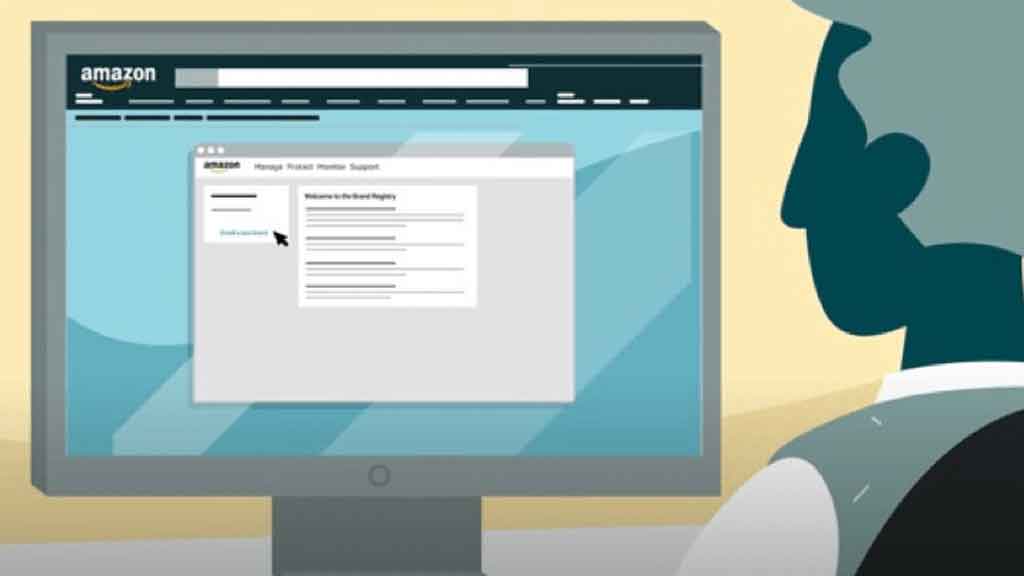
Identifying Counterfeit Products and Sellers
Counterfeit products and unauthorized sellers can harm your brand’s reputation and sales:
- Regular Monitoring: Continuously monitor your product listings for counterfeit versions. Look for discrepancies in product quality, pricing, and seller information.
- Compare with Authentic Products: Familiarize yourself with the characteristics of your genuine products so you can easily spot counterfeits.
- Track Seller Behavior: Keep an eye on seller listings that undercut your prices significantly or use deceptive product titles and descriptions.
Reporting and Enforcement on Amazon
Amazon provides tools and mechanisms for brand owners to report counterfeiters and unauthorized sellers:
- Amazon Brand Registry: Enroll in Amazon’s Brand Registry program to gain more control over your product listings and report violations directly.
- Report Violations: Use Amazon’s reporting system to report counterfeit products and sellers. Include evidence such as images, purchase records, and product details to support your claims.
- Work with Amazon: Collaborate with Amazon’s Brand Protection team to address infringement issues effectively. They can assist in taking necessary actions against violators.
Implementing Brand Registry and Brand Gating
Amazon’s Brand Registry and brand gating are proactive measures to protect your brand:
- Brand Registry: Register your brand and products through Amazon’s Brand Registry program. This enhances your control over your listings, making it easier to report and remove counterfeit products.
- Brand Gating: Brand gating restricts unauthorized sellers from listing your products. To implement brand gating, you must meet specific criteria, such as having a registered trademark.
- Consult Legal Experts: Consider seeking legal advice to protect your brand’s intellectual property and enforce your rights against infringing parties.
Legal Actions Against Counterfeiters
In severe cases, taking legal action may be necessary to protect your brand’s integrity:
- Consult with Legal Professionals: Consult with attorneys experienced in e-commerce and intellectual property law. They can advise you on the best course of action, which may include sending cease-and-desist letters or filing lawsuits against counterfeiters.
- Protect Your Trademarks: Register your trademarks and patents to strengthen your legal position. This can provide additional protection against counterfeiters.
- Collaborate with Law Enforcement: In extreme cases, collaborate with law enforcement agencies to address criminal counterfeiting operations.
Ongoing Brand Protection Strategies
Brand protection is not a one-time effort but an ongoing commitment:
- Regular Monitoring: Continuously monitor your product listings and seller accounts for potential violations.
- Stay Informed: Stay informed about changes in Amazon’s policies and legal regulations related to brand protection.
- Proactive Enforcement: Take swift and decisive action against counterfeiters and unauthorized sellers to deter future violations.
- Adapt to New Challenges: As e-commerce evolves, new challenges may arise. Stay adaptable and adjust your brand protection strategies accordingly.
FAQS
1. How can I join Amazon Affiliate Program?
By recommending Amazon products, people and website owners can make money through the Amazon Affiliate Programme, formally known as Amazon Associates. Visit the Amazon Associates website and create an account to get started.
• After receiving approval, you can create affiliate links for the goods you want to market.
• Add these links to your blog, website, and social media pages.
• When someone buys something via one of your affiliate links, you get paid.
2. How can I optimize my Amazon product listings for better search visibility?
To optimize your Amazon product listings for better search visibility (Amazon SEO):
- Conduct keyword research to find relevant search terms for your product.
- Incorporate these keywords strategically in your product title, description, and bullet points.
- Use high-quality images and videos to showcase your product.
- Encourage positive customer reviews and respond to them professionally.
- Regularly monitor and update your listings based on performance data.
3. What are some emerging trends in Amazon FBA for 2023?
Emerging trends in Amazon FBA for 2023 include:
- Increased automation in fulfillment centers.
- The execution of AI-driven analytics to make data-driven decisions.
- A focus on sustainability, for instance, eco-friendly packaging.
- Enhanced global expansion opportunities, particularly in growing international markets.
4. What legal actions can I take against counterfeiters on Amazon?
You can take several legal actions, such as:
• Writing cease-and-desist letters to suspected counterfeit sellers, if you believe your brand is being used to sell counterfeit goods on Amazon.
- Filing a complaint with Amazon’s Intellectual Property team.
- Registering your trademarks and patents to strengthen your legal position.
- Collaborating with law enforcement agencies for criminal investigations if necessary.
5. How can I encourage customers to leave product reviews on Amazon?
Encouraging customers to leave product reviews is essential for building trust with potential buyers. You can:
- Send polite post-purchase emails requesting reviews.
- Offer exceptional customer service to leave a positive impression.
- Provide clear and easy-to-follow instructions for leaving reviews.
- Avoid incentivizing or manipulating reviews, as this violates Amazon’s policies.
6. What is the Amazon Best Sellers list, and how can I use it to find a niche?
The best-selling items on the marketplace are listed in the Amazon Best Sellers list, which is consistently updated. It’s an excellent resource for locating future markets with high demand.
To use it effectively:
- Visit the Best Sellers page on Amazon and explore different categories.
- Pay attention to products that consistently rank highly.
- Analyze these niches for competition, seasonality, and profitability before making a decision.
7. How do I choose between an Individual and a Professional Amazon seller account?
Your choice between an Individual and Professional seller account depends on your anticipated sales volume. If you plan to sell fewer than 40 items per month, an Individual account may be suitable. However, if you expect higher sales volumes or if you’re serious about scaling your business, a Professional account is more cost-effective. It also provides additional features, such as bulk listing tools and access to Amazon’s advertising platform.
8. How do I protect my brand from counterfeit products and unauthorized sellers on Amazon?
Brand protection on Amazon requires vigilance and proactive measures:
- Enroll in Amazon’s Brand Registry program to gain more control over your listings and report violations easily.
- Regularly monitor your product listings for counterfeit products and unauthorized sellers.
- Utilize Amazon’s reporting system to report violations, providing evidence to support your claims.
- In severe cases, consult with legal professionals to explore legal actions against counterfeiters and unauthorized sellers.
9. How should I handle negative reviews and disputes on Amazon?
Negative reviews are an inevitable part of selling on Amazon, but how you handle them can make a significant difference:
- Maintain professionalism in your response to negative reviews.
- Avoid defensive or confrontational language.
- Express understanding and a genuine desire to address the issue.
- When possible, attempt to resolve issues privately through direct communication with the customer.
10. What strategies can I use to expand my product line with Amazon FBA?
Once you have a well-established FBA product or product line, consider expanding strategically:
- Explore complementary products within your niche.
- Research and enter new niches that align with your business expertise and interests.
- Consider private labeling to offer unique products and build brand loyalty.
11. How can I maximize my earnings as an Amazon affiliate?
To maximize your earnings as an Amazon affiliate, focus on niche selection, content quality, and audience engagement. Research high-demand products, create valuable content around them, and optimize your website for conversions. Consistently update your content, track performance, and consider using Amazon’s various advertising tools to boost earnings.
12. Are there any passive income opportunities with Amazon’s affiliate program?
Yes, Amazon’s affiliate program can generate passive income. After setting up affiliate links within your content, they can continue to generate commissions as long as your content remains relevant and attracts traffic. This passive income can accumulate over time.
13. What is the typical earnings per click (EPC) for Amazon affiliates?
Depending on your niche, the products you promote, and the caliber of your material, the earnings per click (EPC) for Amazon affiliates might vary greatly. Typically, EPCs cost between a few cents and a few dollars. Focus on content optimization and high-converting product targeting to raise your EPC.
14. How can I calculate my Amazon affiliate income accurately?
Keep track of how many times your affiliate links are clicked, how many items are purchased as a result, and the commission percentage for each category of products to determine your Amazon affiliate income. Utilize this information to project your income. Additionally, Amazon offers thorough reports in your affiliate dashboard.
15. What are the commission rates for the Amazon affiliate program?
Amazon’s affiliate program offers varying commission rates depending on the product category. These rates can range from 1% to 10% or more. Be sure to check Amazon’s official Affiliate Program Operating Agreement for the most up-to-date commission rates.
16. How does Fulfillment by Amazon (FBA) impact seller income?
Fulfillment by Amazon (FBA) can positively impact seller income by offering benefits like Prime eligibility, efficient order fulfillment, and access to Amazon’s vast customer base. FBA often leads to increased sales and higher income due to the trust customers place in Prime-eligible products.
17. When does Amazon typically release its earnings reports, and where can I find them?
Quarterly earnings reports are routinely released by Amazon. These reports, which include financial statements, are available on Amazon’s official website under the Investor Relations tab. They give thorough explanations of the business’s financial performance.
18. How has Amazon’s earnings history and growth trended over the years?
Amazon’s earnings history shows impressive growth over the years. The company has consistently expanded its revenue streams through e-commerce, cloud services (Amazon Web Services), and other ventures. Its financial reports and earnings calls provide valuable insights into this growth trajectory.
19. What strategies can I use to increase my earnings through Amazon’s Associates program marketing efforts?
To boost your earnings through Amazon Associates marketing, focus on creating engaging content that appeals to your target audience. Implement SEO best practices, experiment with different types of content (e.g., product reviews, and tutorials), and diversify your affiliate marketing efforts across various platforms and channels.
20. How can I interpret Amazon’s earnings call transcript and financial results?
Interpreting Amazon’s earnings call transcript and financial results requires understanding financial terminology and key performance metrics. Look for information on revenue, profit margins, net income, and future growth strategies. Analyst commentary during the earnings call can also provide valuable insights.
21. Are there any opportunities for additional income as an Amazon seller beyond selling products?
Yes, as an Amazon seller, you can explore additional income opportunities, such as offering complementary services like product photography or consulting to other sellers. You can also consider expanding your product line and leveraging Amazon’s advertising services to increase visibility and sales.
22. How can I stay updated on Amazon’s earnings release dates and financial updates?
To stay informed about Amazon’s earnings release dates and financial updates, regularly check Amazon’s Investor Relations website and subscribe to their email notifications. Many financial news outlets also cover Amazon’s earnings announcements.

